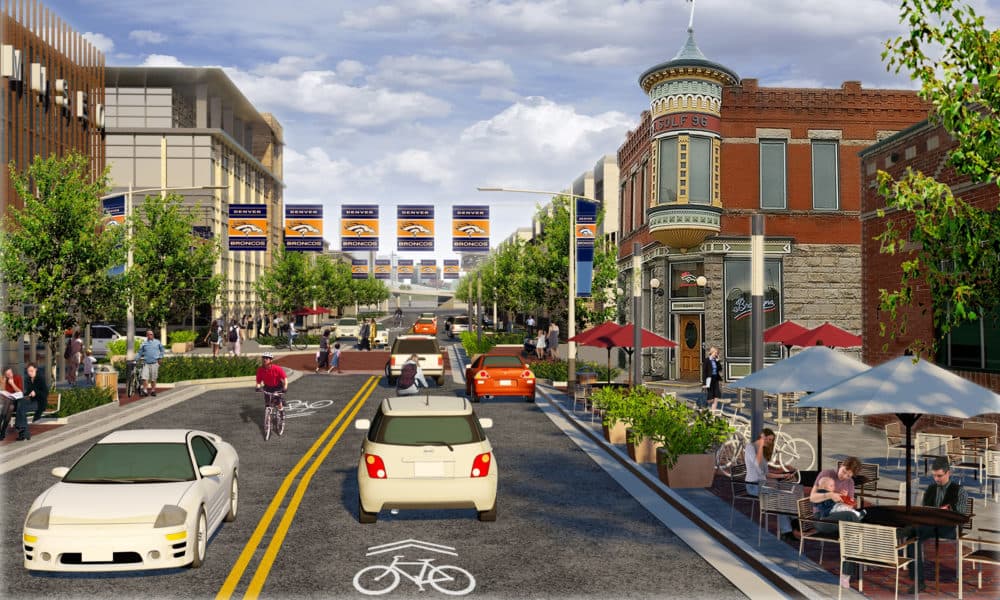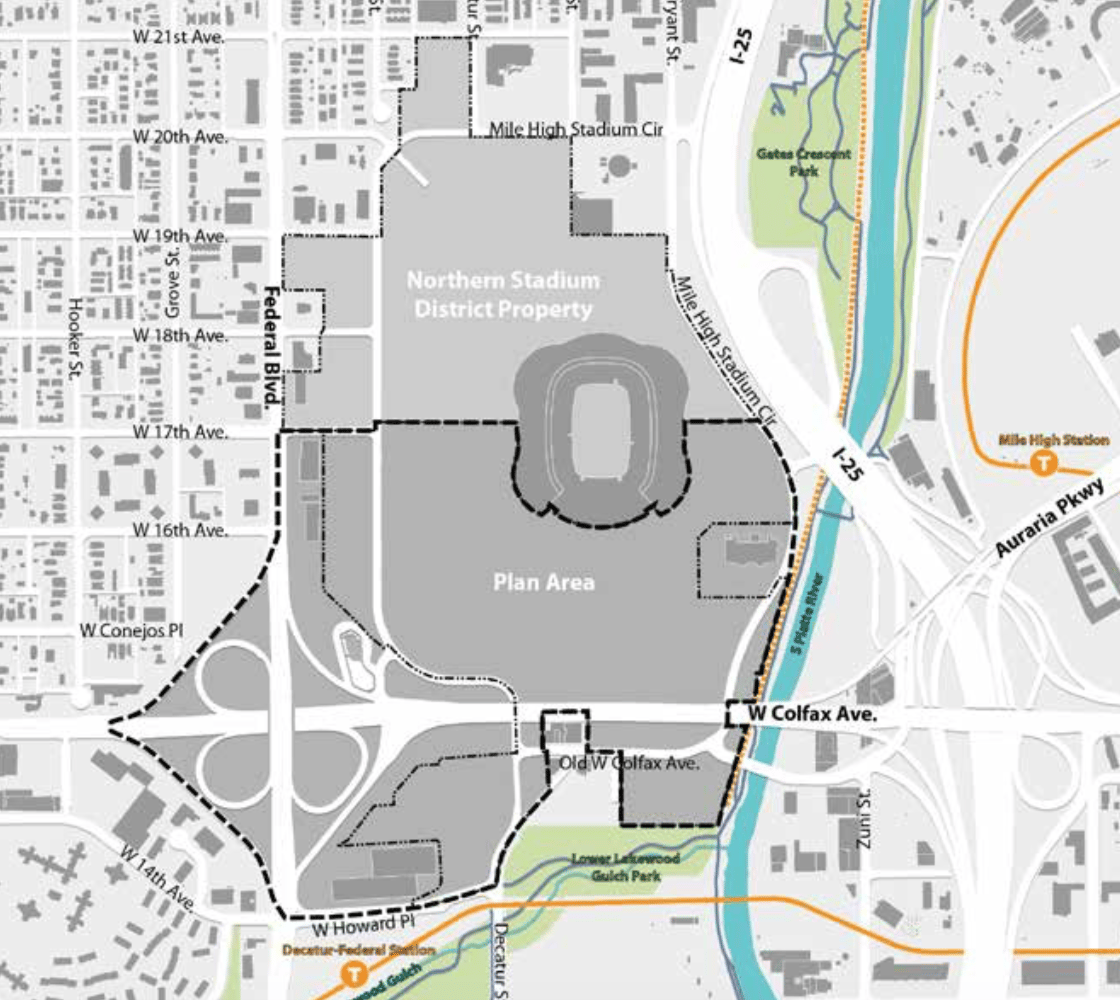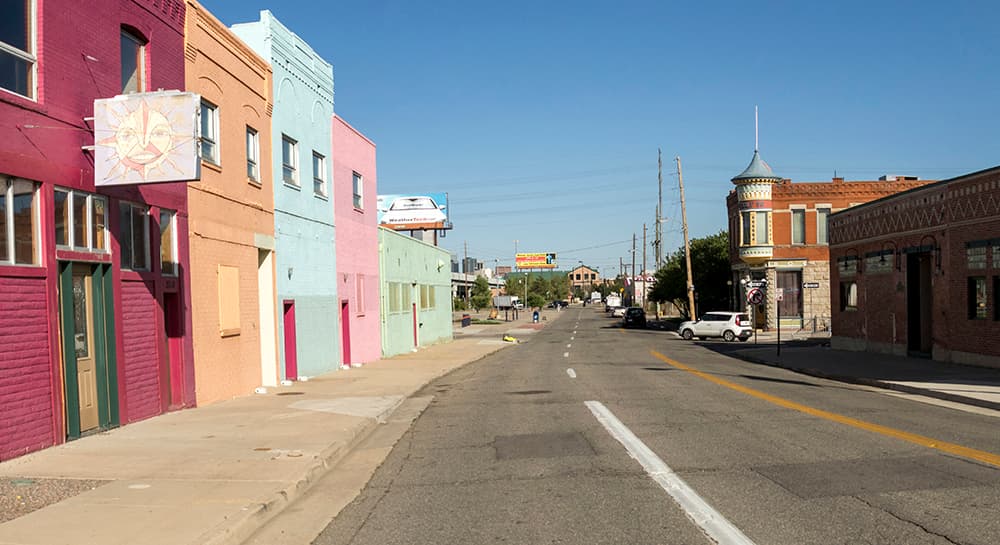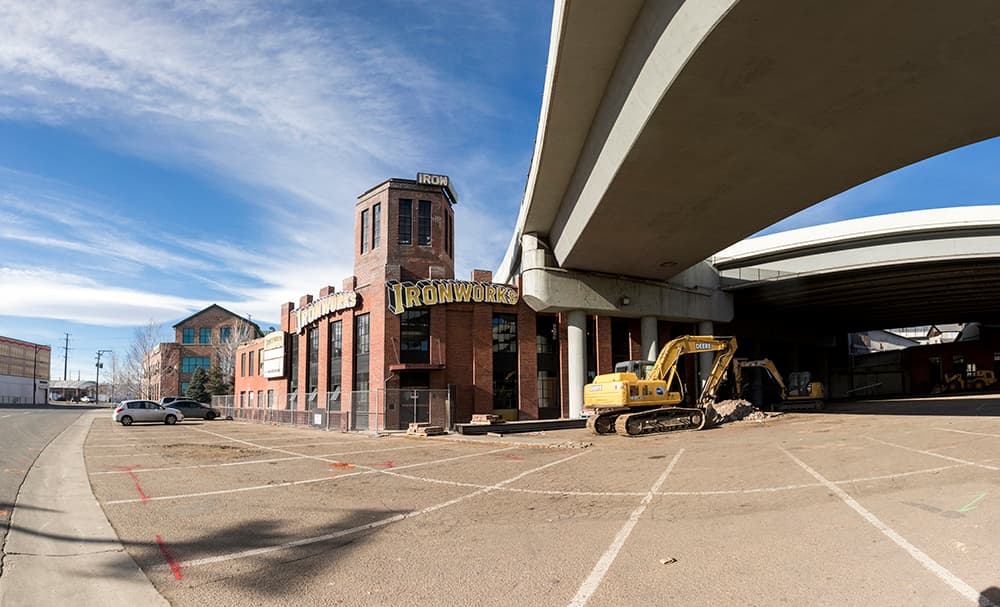Eight days a year, the parking lots around Broncos Stadium at Mile High are packed with people cheering, drinking, scalping, barbecuing and corn-holing. The Platte River trail is full of fans walking and biking, and RTD trains are packed.
But most of the year, crickets.
The Denver City Council passed the Stadium District Master Plan on Monday. It aims to energize the area year-round by building a new neighborhood over the next 20 years. The 90-page vision sets the tone of -- and opens the gates to -- development. Public parks and places to live, work, shop and dine are in the cards.
The Hancock administration wants to see a 70-acre, mixed-income neighborhood scaled for walking and biking, anchored by the stadium and two nearby light rail stations. Mile High's southern surface lots, Old West Colfax Avenue, Lakewood Gulch and the South Platte River co-star in the future stadium district, which will see buildings between five and 30 stories high.
Tree-lined streets with wide sidewalks and, sometimes, bikeways will contribute to a grid of two-way streets. Street designs will prioritize people walking and biking over cars, the document states, if all goes according to plan.


Parking lots left vacant for almost every day of the year are the right place for dense development, City Councilwoman Robin Kniech said, as long as playmakers follow the plan.
"Every story that is built here reduces pressures elsewhere," Kniech said.
Planned Denver, however, doesn't always equate to real Denver. The planning department's shelves are lined with documents full of ideas that have not been realized, at least not yet.
The blueprint recommends things but doesn't require them. For example, apartment buildings above five stories should contain affordable homes in exchange for extra height, the document states. But it's up to future development agreements and City Council actions to ensure it happens. Same with capping parking spots to deter traffic. Same with luring grocery stores with incentives.
Jason Whitlock, project manager with Denver Community Planning and Development, said the document is a guide, not a rigid prescription.
"The first step to make this (development) environment happen is the plan itself," Whitlock said. "I don't want to diminish the plan as a guiding document."
More than 1,300 people participated in the public process, according to the project team. Seven area neighborhood organizations endorsed the plan.
Servicios de la Raza Executive Director Rudy Gonzalez said the 13-month process was "probably one of the most inclusive processes that I've been a part of in my life." He looks forward to "housing that lets dishwashers to CEOs live where they work," he said.
But Phillip Kaspar, who has lived in Sun Valley for more than 20 years, said he's skeptical of the Metropolitan Football Stadium District, a government body created to build and maintain the Broncos arena with taxpayer funds. The MFSD owns most of the land around the stadium.
"I don't believe that (the plan) is ready yet because, from history, the stadium district has not acted in good faith," Kaspar said. "They don't do what it takes in their own community to mitigate impacts ... and now they want to add more traffic?"
The timeline for the neighborhood's buildout will hinge largely on the private sector.
The Metropolitan District, the Broncos and the city government will negotiate infill with developers. A master developer may coordinate the infill, but no one is at the table yet, according to Mac Freeman, Broncos chief commercial officer.


The Metropolitan District would essentially lease the land for development and use profits for $750 million in stadium maintenance over the next 20 years, said Matt Sugar, director of stadium affairs for the Metropolitan District.
"The whole idea is to not have to go back to the taxpayers for the maintenance and operations of the stadium over a long period of time," Sugar said.
The stadium district is one of three big pieces to a giant puzzle getting put together downtown and on the westside.
Like the River Mile neighborhood poised to supplant Elitch Gardens, the stadium district will be a neighborhood essentially built from scratch. Add the redevelopment of Sun Valley to the mix, and you have a massive swathe of future change.
With development talk comes displacement talk. More than 31 percent of people in the area live in poverty, according to the planning department. Forty-six percent identify as Latinx, 41 percent identify as white and 8 percent identify as black.
"Diversity and inclusion need to be maintained to make sure they become a priority and don't get lost in the process," said Jose Beteta, a Sun Valley business owner who supports the plan overall.
While the plan recommends on-site affordable housing requirements, specifics -- how much, how affordable -- remain up in the air. But big changes to zoning regulations will likely come next, planner Whitlock said.
A "community benefits agreement" with commitments from developers remains unsigned -- in part because no developers have signed up.
"We're gonna get there and we're gonna commit to doing what's right for this project," Freeman said.
Game day pre-gamers, this is the section you've been scrolling for.
No plans exist to build on the northern parking lots, so traditional tailgating will probably stay put in that area.
Broncos spokesperson Seth Medvin said it's far too early to talk about how the game day experience will change post-development, given the lack of shovels in the ground.
But it's hard to imagine tailgating in the southern lots -- because they won't exist. Instead, people might expect a change in the standard tailgating tradition, Whitlock said. Families and friends might replace grilling on concrete with grilling in a park or grabbing food from a local restaurant.
"Experiences could change over the years," Whitlock said. "They possibly could get even better with incorporating public space."
City Councilman Paul López, whose district covers includes the stadium area, compared the new Mile High to Coors Field.
"It's built right smack in the middle of everything," he said. "Folks don't remember what it was like -- nothing like it is now. And this will generate jobs, opportunity, housing."
Council passed the document 9 to 0, with members Council President Jolon Clark and members Albus Brooks, Rafael Espinoza and Chris Herndon absent.













